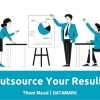In Part 1 of this two-part article, we looked at what procurement and finance teams can do now to improve collaboration and effectiveness in the face of business disruption. Part 2 looks at technology, automation and data as critical components in making that happen, especially as organizations scramble to achieve business continuity working with remotely-based teams.
We know that procurement is often a juggling act! We use decent supplier relationships, purchasing power, and any other tools in our belt to secure best payment terms, highest quality purchases at the lowest price, or indeed best value, to ensure vital continuity of supply against a backdrop of supply chains becoming ever more complex and volatile!
All of this balancing is difficult while also trying to keep an eye on cash flow and keeping our friends in finance happy, who may not always appreciate the balancing act that’s going on. While cash flow is their key metric, even early payment discounts can be seen negatively in terms of impact on available cash.
How can better collaboration help?
A. Extend your payment terms. Sorry for pointing out the obvious, but if you don’t know what your payment terms actually are and whether you're really working to them, the next steps are not going to be of much use to you!
Extending payment terms frees up valuable cash flow, so it has a positive impact on the balance sheet to help fund investments. However, suppliers can’t always accommodate very long terms. Pushing this out can not only damage the relationship and adds time to negotiations, but also ultimately drives up their operating costs, which will then get passed on to you.
What can we do to balance the cash flow needs of suppliers and buyers?
B. Supply chain financing, or using a third-party funder, is an excellent win-win result to ensure your suppliers are paid early. But as a buying organization, you can pay when you like, on your finance-friendly extended terms. You benefit from holding onto the cash for the full payment term, but more importantly, the supplier gets paid when they need to. This can speed up pesky negotiations and ensure a happy CFO because cash flow is positive. Not always, but often the funder will perhaps take a small cut, but that can usually be paid for by potentially combining this with early payment discounts.
C. Early payment discounts - Buyers agree to pay suppliers early in exchange for a discount. These can be fixed discounts (e.g., 2% discount when paid on or before day 10 of a 30-day payment term) or on a sliding scale (dynamic discounting) up to the invoice due date. The discount can add to the bottom line and a small slice can be used to fund the factoring activity. All of this requires slick processes for managing your procure-to-pay process. If you don’t have an automated tool for managing this process, it will be challenging to ensure you are paying on time, let alone have the flexibility to change up the discounting process. Of course, technology will massively help here, to both reduce cycle times and control and implement dynamic discounting with your suppliers!
A critical area to promote collaboration is that of risk management!
Internal and External Risk
We can split risk (and associated data collected to support your understanding of it) out into two main buckets: Risk data that can be collected externally and that which lurks within — internal risk data. Either way, a perfect place to start is to correlate impact and mitigation at a supplier level.
Once you have individual supplier risk assigned, with the right technology you can group this risk by any associated data that you have collected against the supplier to see compound effects or translate it to financial exposure. If you have data recorded for a supplier, then you measure, mitigate or report against it and start filtering into meaningful groups in the event of a crisis or during risk planning.
External Data – This may be as simple as automating and scoring supplier financial info in the form of data input from D&B, or via feed from external risk services like EcoVadis and Resilience 360. You might want to extend this across digital risk, plugging into new technology offerings like Dark Beam — companies designed to test your cyber weaknesses or those of your suppliers. These tools are powerful and also help you understand up-to-date changes in risk profile without admin time for most of the checks that could happen manually.
Unfortunately, even with technology, 65% of CPOs have limited visibility beyond their tier 1 suppliers, so more work may need to be done to unearth risk lurking further up the supply chain.
The Value of Your Information
A vast source of information that you can count on being relevant is your own. When you have a fully-integrated platform pulling from one master data source, you can start to do some clever things with pulling real data in from your own systems and see what’s going on in other departments, without relying on lengthy meetings to keep everyone up to date.
For example, what if a supplier is always late paying – or worse, they’ve gone into insolvency? You want your buying team to know about this asap in order to reach out to them and consider the impact on the supply chain and make alternative supply arrangements and stop placing orders.
It’s that viability of dispute flags or translating this back to a negative score on the supplier’s scorecard that brings value. Once an automated way of flagging risks is implemented at a supplier level, you may want to implement methods of tracking improvements to measure trends. Again, difficult to manage if you’re relying on manual processes or human judgment!
Ongoing Supplier Performance should be a careful balance of automatically-collected data pulled in from both internal and external sources. That doesn’t mean removing the need for human understanding of the data; you just need everything in one place to enable people to make informed decisions, quickly.
What’s In It For You?
It may seem obvious, but collaborative working leads to a whole host of benefits for the organization! Aside from the fact that we now don’t have a choice but to pay attention to how individuals and teams interact with each other, we really can measure the benefits of finance and procurement teams working together.

What have we learned?
Working from home restricts our ability to continue with the status quo when the status quo is a manual, disjointed process. Maybe one thing to emerge from the Coronavirus crisis will be the prioritization of automated and collaborative ways of working as a fundamental requirement of our businesses. One thing is for sure, those that do have the tools to collaborate easily online certainly recover faster than those without.









